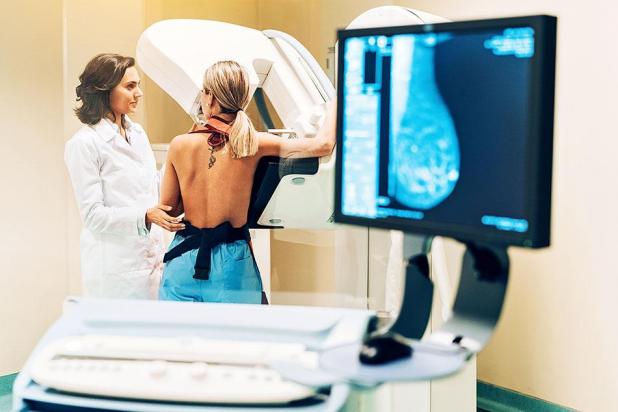
Mammograms are the best way to find breast cancer early, when it is easier to treat and before it is big enough to feel or cause symptoms.
Mammogram may find breast cancer earlier
EDITOR’S Note: Information has been culled from the Centers for Disease Control and Prevention and the Susan B. Komen Breast Cancer Foundation.
October is Breast Cancer Awareness Month and Oct. 15 was National Mammogram Day. The Centers for Disease Control and Prevention offers ideas on how to be aware of the risks.
When should I start getting mammograms?
Wondering when to start or how often to get screening mammograms? Ask your doctor when you should get a mammogram.
Other than skin cancer, breast cancer is the most common cancer among American women. Mammograms are the best way to find breast cancer early, when it is easier to treat and before it is big enough to feel or cause symptoms.
What are the symptoms?
There are different symptoms of breast cancer, and some people have no symptoms at all.
Symptoms can include:
—Any change in the size or the shape of the breast.
—Pain in any area of the breast.
—Nipple discharge other than breast milk (including blood).
—A new lump in the breast or underarm.
If you have any signs that worry you, see your doctor right away.
What are the risk factors?
Some main factors that affect your chance of getting breast cancer include:
—Being a woman.
—Being older. Most breast cancers are found in women who are 50 years old or older.
—Having changes in your BRCA1 or BRCA2 genes.
How can I lower my risk?
You can do things to help lower your breast cancer risk. This includes keeping a healthy weight, exercise regularly, don’t drink alcohol or limit the amount of alcohol you drink and breastfeed your children, if possible and applicable.
If you are taking hormone replacement therapy or birth control pills, ask your doctor about the risks.
Are you worried about the cost?
Although breast cancer screening cannot prevent breast cancer, it can help find breast cancer early, when it is easier to treat. CDC offers free or low-cost mammograms to low-income, uninsured and underinsured women across the United States.
Fast facts about breast cancer
Each year in the United States, about 255,000 women get breast cancer and 42,000 women die from the disease.
Men also get breast cancer, but it is not very common. About 1 out of every 100 breast cancers diagnosed in the United States is found in a man.
Most breast cancers are found in women who are 50 years old or older, but breast cancer also affects younger women.
The CDC’s Bring Your Brave campaign shares stories of young women whose lives have been affected by breast cancer.
To learn more visit the CDC website at www.cdc.gov/cancer/dcpc/resources/features/breastcancerawareness/index.htm.
Anyone with breast cancer can find help online at the komen.com breast care helpline by emailing helpline@komen.org or call 1-877 GO KOMEN. The helpline offers free support from trained oncology social workers, as well as guidance to local resources. The phone line is available Mondays through Fridays from 8 a.m. to 9 p.m.
Komen.com also offers a Treatment Assistance Program for those with financial hardship.
